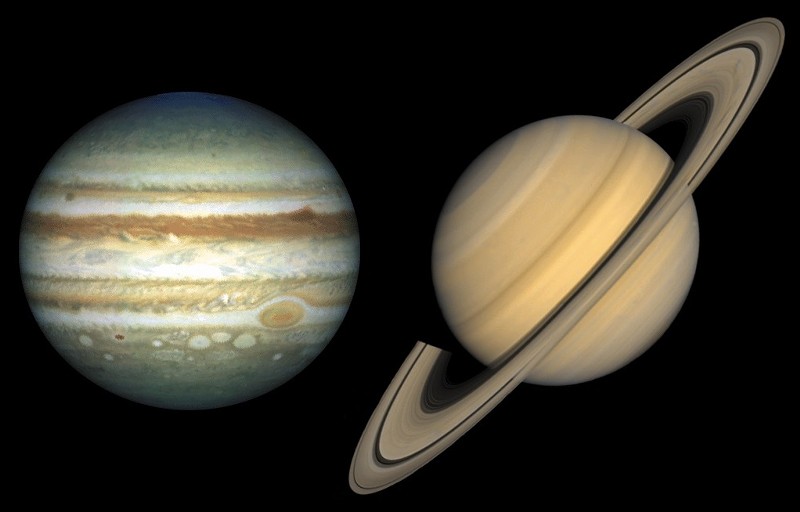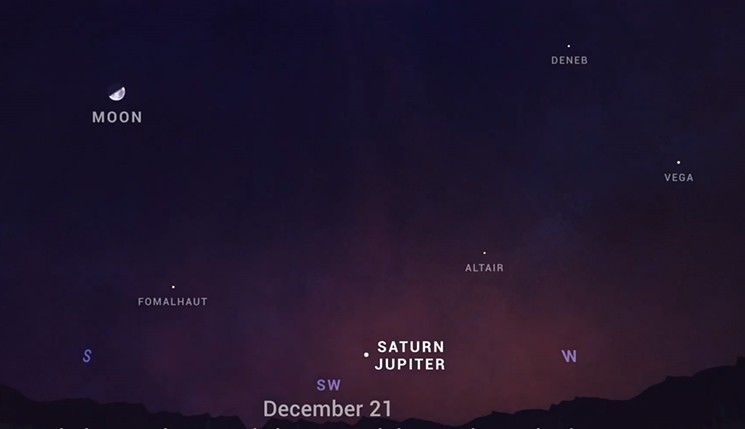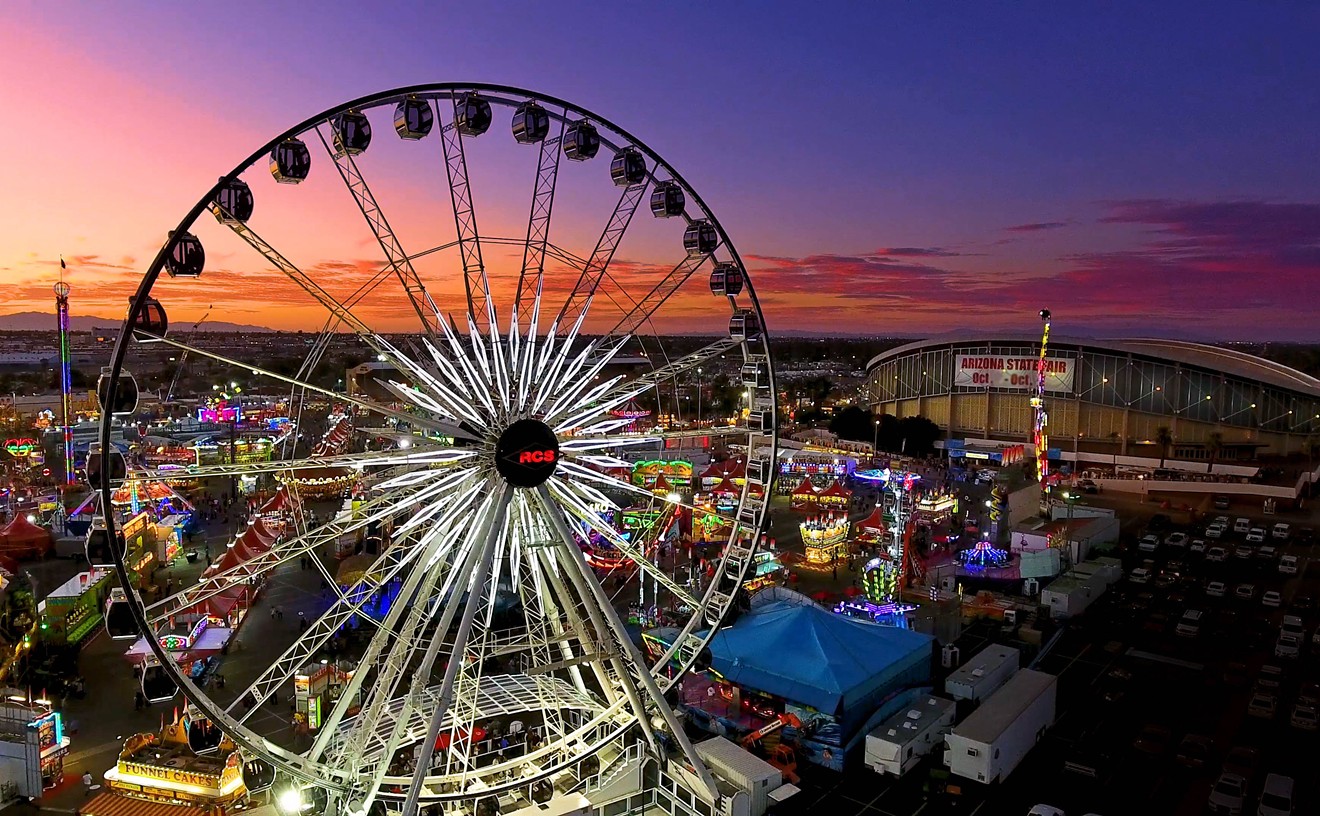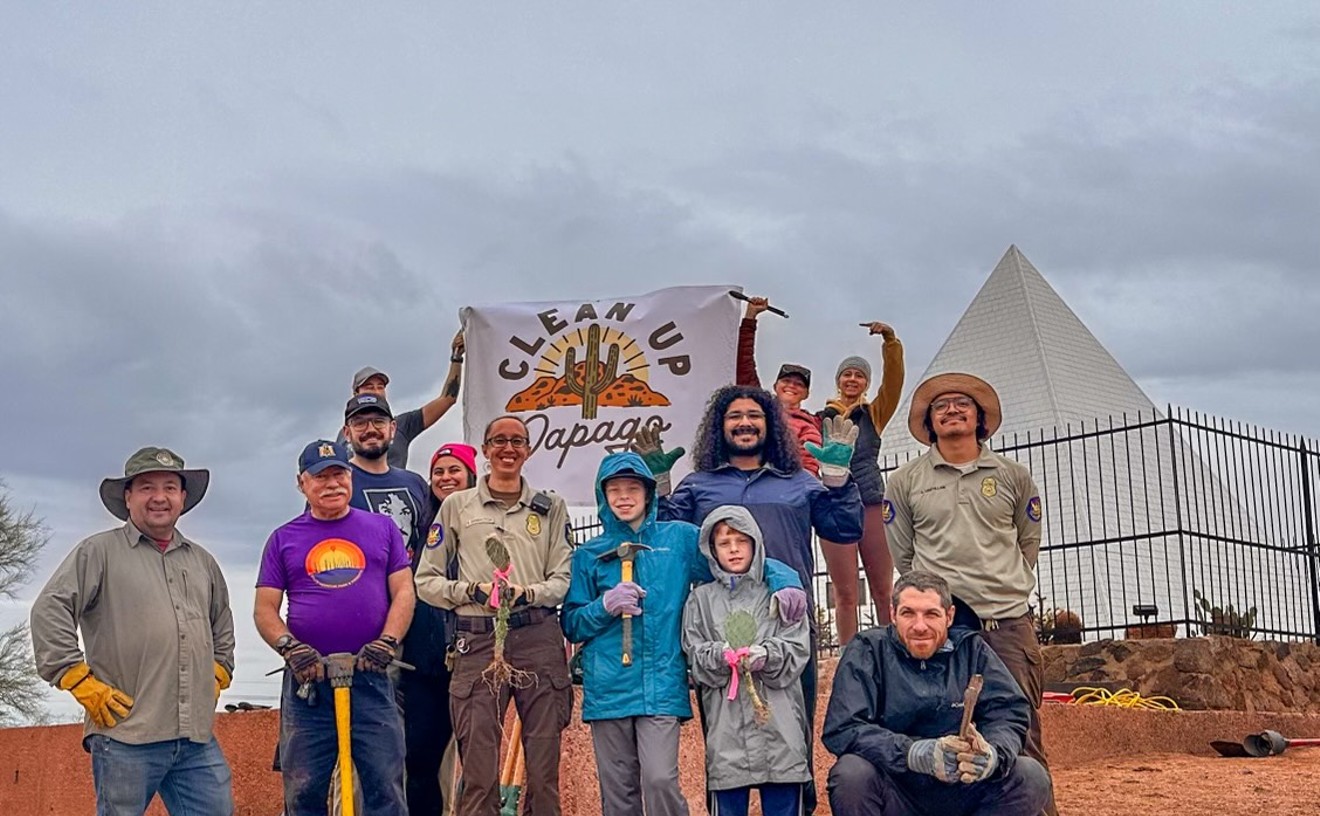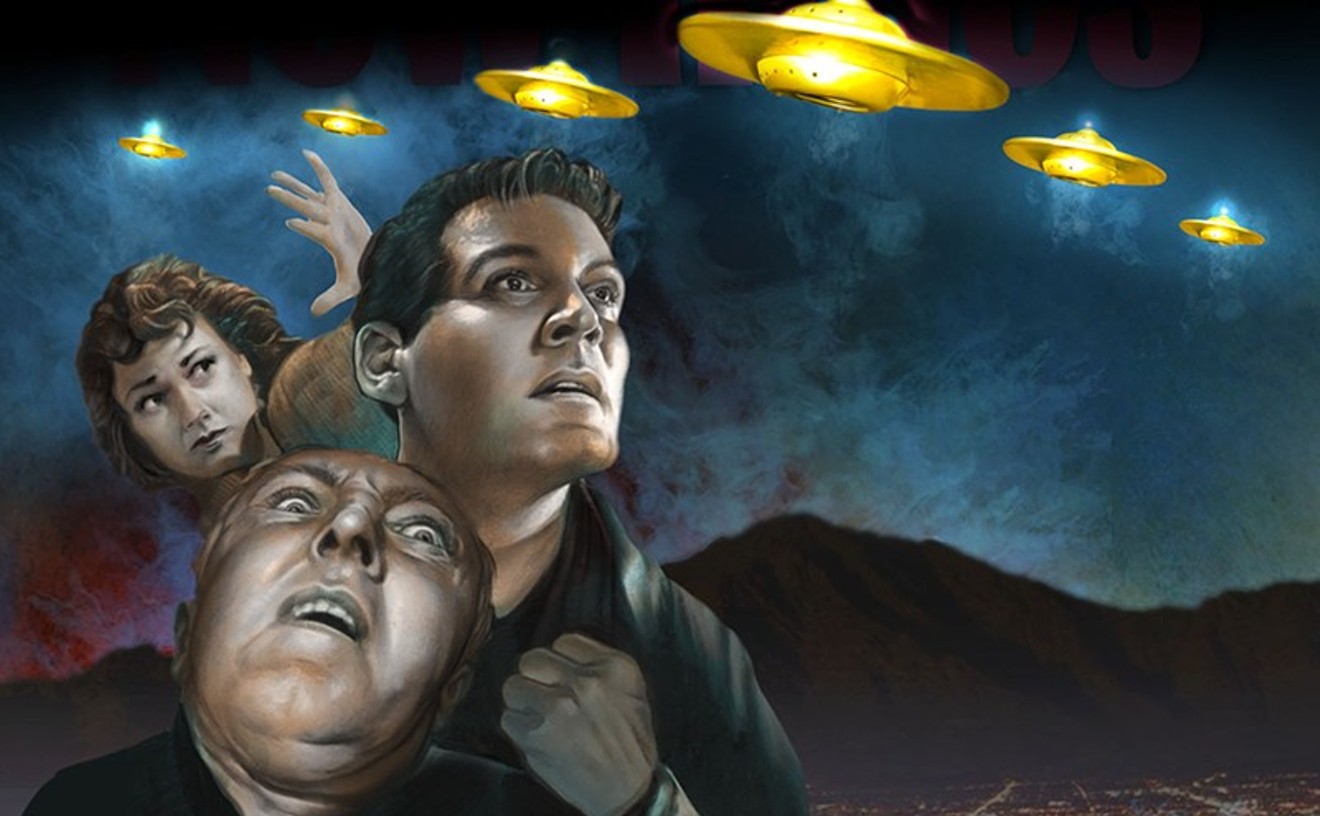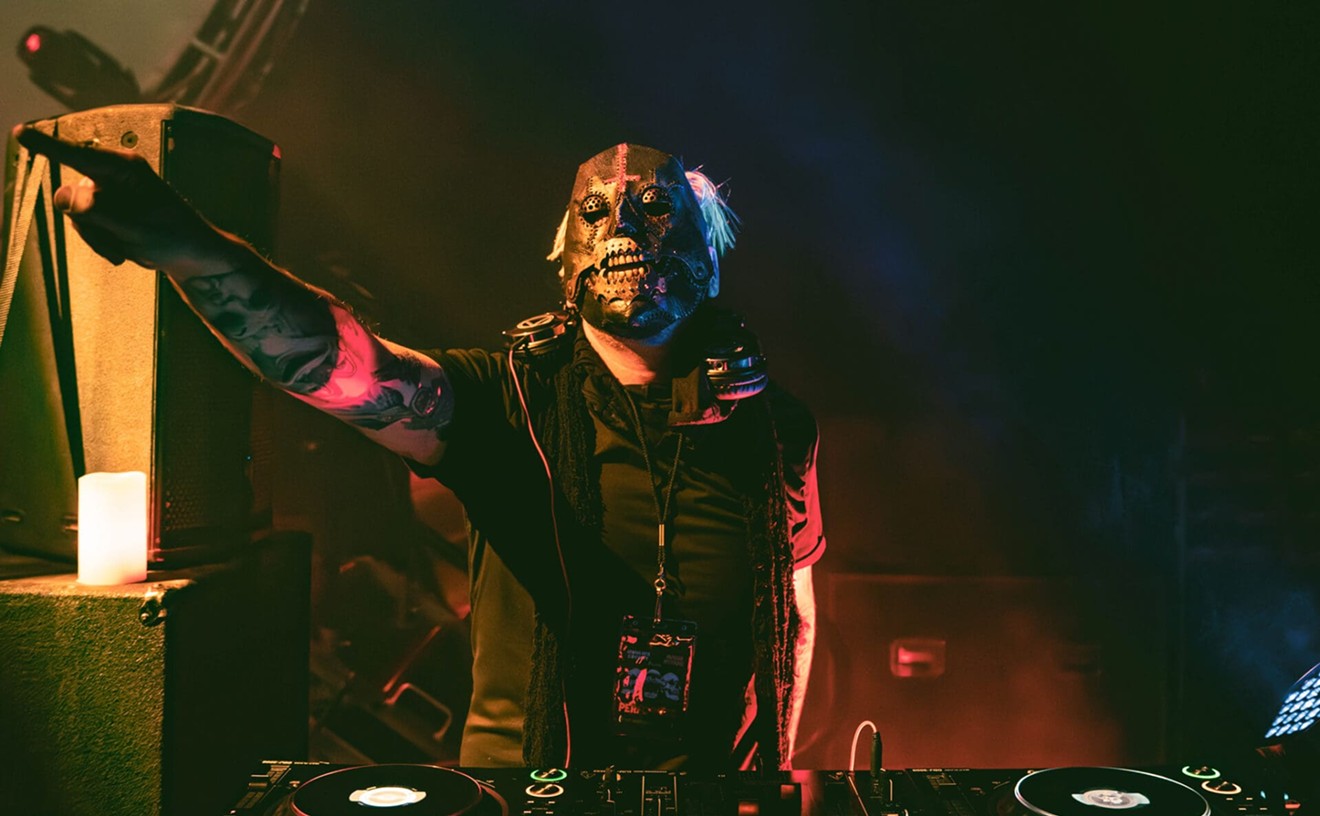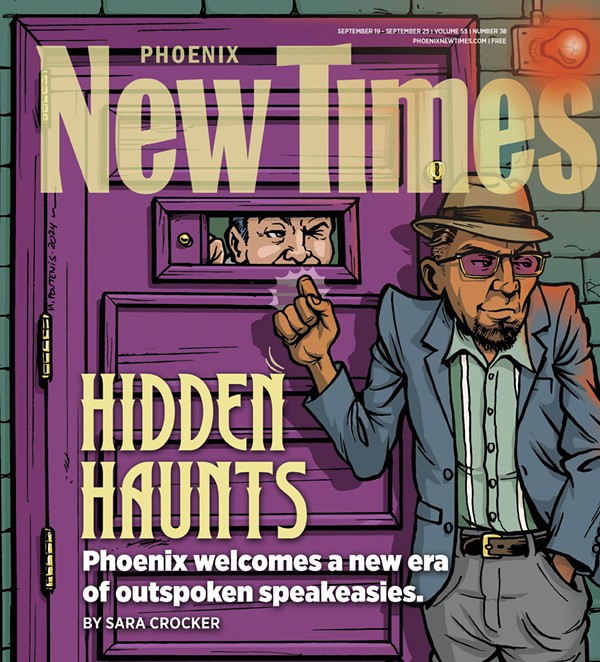On Monday, December 21, Jupiter and Saturn will get close enough together in the night sky that they’ll appear to form a single planet. It’s known as a “great conjunction” by astronomers and is a unique celestial event that occurs once every 20 years or so.
This particular conjunction will be even more special, and not just because it will happen during the winter solstice. According to astronomers, Jupiter and Saturn will appear to be less than a 10th of a degree apart, the closest they’ve been in almost 400 years. (The last time it occurred was in 1623 during the age of Galileo.)
As Renu Malhotra, a planetary sciences professor at the University of Arizona, told the New York Times recently, the alignment of the two gas giants is a bit of celestial magnificence that’s worth seeing.
“It’s a very elegant astronomical event to watch in the night sky,” Malhotra says. “It’s a very romantic event to see these planets approaching each other.”
Claude Haynes of the East Valley Astronomy Club says it's also a unique enough experience that any skywatcher should see at least once in their lifetime.
“Saturn and Jupiter come close to each other on a fairly regular basis, but the big thing this time is that it's been hundreds of years since they've been this close,” he says. “So conjunctions happen every year, but this one is so rare [that it’s] one of those things you can check off your 'I saw this' list.”
The event will take place during the span of an hour or so during the early evening. And thanks to the brightness of both planets in the night sky, you won’t need binoculars or a telescope (although both would help). If you’d like to view this planetary ballet unfold, here’s everything you’ll need to know, including when and where to look.
So What’s Causing The Great Conjunction to Happen?
While Jupiter and Saturn are approximately 403 million miles apart, from our perspective here on Earth, their orbits appear to be in close alignment with each other this time of year.When Does the Conjunction Take Place?
As we mentioned, it will happen just after sundown on the evening of Monday, December 21. Haynes recommends looking starting to look just after sunset officially occurs at 5:23 p.m., which is when both Jupiter and Saturn will get brighter in the sky. The conjunction will be visible for approximately 90 minutes or so before the planets move below the horizon.If you’d like a preview of their close encounter, they’ll be getting in nearer in proximity to one another each night leading up to the event. “I’d suggest going out as soon as you can and start observing each night because it’s a remarkable change that’s occurring,” Haynes says. “It could be a science lesson for you and your kids.”
Where In the Sky Should You Look?
In the southwestern sky, basically. Both planets will be relatively close to the horizon (approximately 20 degrees) but will be viewable during the 90-minute-long window.What Will the Viewing Conditions Be Like?
The current forecast calls for clear skies every night leading up to December 21 with almost zero clouds. The moon will also be visible in the southwestern sky, but since it's in the midst of the first quarter of its monthly phase, its light won’t be enough to drown out the brightest of stars and planets, including Jupiter and Saturn.Where In Arizona Should You Go to View the Conjunction?
It will be viewable from almost anywhere there’s a clear, unobstructed view of the southwestern horizon. That said, as with any sort of skywatching, being in a place that’s as dark as possible would be best. In other words, you’ll want to head for the outskirts of town and away from the vast light pollution, says Pete Turner of the Phoenix Astronomical Society. “If you're in downtown Phoenix, you're going to have a tougher time,” he says.Are There Any Apps You Can Use?
Yes. Most of the skywatching and stargazing apps available for iOS and Android – including Star Chart, SkySafari, and Solar Walk – can be used to locate the planets.Will You Need a Telescope or Binoculars?
Not necessarily, but they’d help. While the conjunction will be easily visible with the naked eye, Haynes believes anyone with a pair of binoculars will get an even better view.“Any kind of binoculars ought to do fine, they don't have to be high power,” he says. “You don’t have to be equipment-dependent to be able to see it; it's like a lunar eclipse in a way.”
Haynes says that having a telescope at their disposal will also enhance the experience, including being able to see several of Jupiter's largest moons. “A telescope will give you a magnified view, so if you've got one know how to use it, it only adds to the fun.”
Are Any Local Viewing Events Happening?
Yes. ASU Marston Exploration Theater will host an online viewing event and live presentation via Zoom Webinar starting at 5:30 p.m. on Monday evening featuring local amateur astronomers. It's a free event but advance registration is required since space is limited.The Lowell Observatory in Flagstaff will also offer a virtual viewing of the conjunction beginning at 5 p.m. on Monday through its website and YouTube channel.
What Does This Mean From an Astrology Perspective?
If you’re a believer in astrology, the great conjunction could be a harbinger of great change in the world. Valley astrologist Brenda Black tells Phoenix New Times that the alignment of Jupiter and Saturn has coincided with world-changing events.“The last time a [great conjunction] happened was in 2000 right after the crash of the dot-com bubble. The one before in 1981 was around the time of global recession,” she says. “These 20-year cycles are very important in that we have major occurrences the same year as the conjunction.”
But that doesn’t mean more doom and gloom, Black says.
“When Jupiter conjuncts with Saturn in an air sign like Aquarius, it doesn't mean bad news. It just begins a new 20-year era,” she says. “There will be dramatic changes or disruptions in communications and established orders. but it has more to do with bringing in a new generation of people with new ideas and they make changes to the status quo.”
And because the conjunction is happening during the winter solstice, Black says that more people may participate in various sorts of spiritual ceremonies, rituals, or rites.
“It’s [something] that might heighten or enhance the experience of bringing in the energy of Saturn and Jupiter,” she says. “There will gatherings of people who will celebrate this event with their meditations and their music, their drums, or their chants.” YMMV.
Haynes agrees that viewing the conjunction could be a life-altering experience, albeit because of astronomy versus astrology. “If you look at it as an example of the wonder and beauty of the universe and contemplate what a wonderful mechanism it is, it could possibly change your life,” he says.

